A head’s up: This week’s story involves a violent event that some may find upsetting. If you would prefer to avoid treading into that territory, I recommend skipping this one.
This week’s newsletter was supposed to be something very different.
On Tuesday, I turned 37 years old, and since I had already “partied” with family and friends over the weekend—when people were actually free to party—I decided to spend my actual date of birth taking a long walk around Boston and Cambridge to revisit all the apartments I’ve lived in for these last 12-ish years; with plenty of food and drink along the way, of course. I started writing an essay about what it’s like to take a spiritual walking audit of your environment and yourself, and I had planned to finish this essay around Wednesday evening. And then, somebody shot Charlie Kirk.
When I heard that something crazy had happened to Kirk—the far right activist who helped Trump boost his ratings with young people, and the founder of Talking Points USA—I instinctively headed over to Twitter, the same social media website where the earliest eyewitness reports of the Boston Marathon bombings were posted in 2013. I remember reading those reports and looking at one photo of what was quite clearly a bloodstained sidewalk near Copley Square: a sign that something real and really bad had just happened. This time, when I logged into Twitter, I was immediately greeted by something similar, and also much worse. It was the video that captured the precise moment when Kirk, in the middle of an outdoor speaking engagement at Utah Valley University, was killed by a shooter’s bullet. Nothing was left to the imagination. There was a lot of blood, a lot of screaming, and a surge of regret that I’ve only just shaken.
I’m old enough to remember an earlier chapter of the Internet, in which one had to go willingly into the darkest, grimiest corners of the web to watch videos of people being killed or tortured; if that sort of thing is their bag. But the final, gruesome moments of Charlie Kirk’s life were broadcast to millions of feeds via Twitter’s algorithm. People were exposed to an accidental snuff film without consent. It’s a shocking reflection of the content moderation collapse that Twitter has suffered since Elon Musk bought the company in 2022. And it’s a serious problem on big social media platforms; Facebook, TikTok, Instagram, Threads, you name it. Increasingly, year by year, the digital content that we’re fed is the content that’s most likely to shock, enrage, and appall us. In 2016, that content may have been your old roommate’s photos from a vacation to Santorini, shown to you a moment when you were running a GoFundMe for medical expenses.
Now it’s a gore video of the latest assassination of a political figure; delivered to our feeds just a few months after Minnesota State Representative Melissa Hortman was shot and killed in her home. There’s been a lot of rightful discourse about how little time we spent dwelling on Hortman’s murder, compared with the mass eulogies that have been pouring in for Kirk and the calls for “vengeance” from MAGA influencers. And while that disparity is a reflection of the idea that violence is okay as long as it affects groups of people who are deemed less human—which is a bipartisan affliction these days, evidenced by the ongoing, U.S.-supported genocide in Gaza—I think the fact that Charlie Kirk’s assassination was a seismic social media moment is important to understand too. Especially as we prepare for the inevitable backlash to the killing.
The fear, among everyone I know whom I’ve spoken with about Kirk’s assassination, is that Trump will use this shooting as a pretext for further repressing free speech and going after anyone who opposes his agenda; the Democratic Party, liberal nonprofits, journalists, and no doubt, a handful of random social media users unlucky enough to get noticed and demonized by a MAGA influencer like Laura Loomer or Christopher Rufo. That last scenario could happen to a lot of us. Try to remember the last time when you tore into Trump with a Facebook post or comment, or the last post that you authored in solidarity with immigrants or trans people. Now imagine that post getting picked up by one of these rabid Trump-adjacent grifters and blasted out to their hundreds of thousands of followers—who then flood your inbox with death threats that prompt you to shut down your Internet presence and basically go into hiding.
This is not hyperbole. It has happened to people I know. Some of the worst cases have been documented by the New York Times. And while it’s a disturbing pattern of online behavior that’s particularly important to Trump’s MAGA movement, that is not what I want to use this week’s newsletter to talk about. Charlie Kirk’s integral role to MAGA and his poisonous rhetoric about Black women, Muslims, LGBTQ+ people, and many others—which must be remembered even as we condemn the assassination—is also not my primary focus. What concerns me most is the technical ecosystem in which this has happened; the websites and apps that are cooking our brains, in many ways.
And this, my dear friends, is where the mission of Mind The Moss—to get you outside, wherever you are, poking around, with renewed curiosity—will come into play as well.
For as long as most of us have been using Facebook, Twitter, Instagram, and the other social media platforms (a little less than 20 years, by my count) we’ve known, vaguely, that these platforms are not good for our minds. We’ve skimmed an essay or two on how these websites are algorithmically designed to flood our brains with dopamine, by showing us words and images that stimulate us. Many of us associate dopamine with pleasure. The thrill of logging onto Instagram and seeing a picture of someone with a really hot body. Or a tower of fresh sashimi that has you salivating. And while you can still find that kind of release on the major social platforms, what’s become clear to big tech companies over this last decade is that anger—which also releases dopamine—can catalyze more prolonged engagement with social media. And if an algorithm deliver content that makes people mad, people may use a platform more.
Maybe it’s getting into a slap-fight with some jerk in the comments section of a news article, or scrolling through the profile of someone who posts “takes” that offend you. Part of you knows this is bad. That you should log off. But you can’t. Not yet, at least.
I am not writing about this from a pedestal—I’m alluding to experiences that I’ve had on social platforms over the last decade. When I was spending more hours on these websites, I was unaware of much of myself I was really spending on them. I was giving away energy, creativity, and time that I could have spent doing things that would have brought more light into my life and my community. I haven’t fully reckoned with how much of myself I gave to social media, because a full accounting would likely leave me feeling devastated. But what I can say, with certainty, is that my slow disenchantment with our scorched earth of social media—and my ongoing effort to extricate myself from these websites—began when Mind The Moss launched in the summer of 2021.
You see, writing a weekly newsletter about walking and the great outdoors in all of its dimensions requires spending a fair amount of time outside. Some of these stories are the result of stored knowledge, from older walks and adventures. But plenty of others were seeded by new field reporting. My recent dispatch about the Dorset, Vermont marble quarry that the Gettysburg tombstones came from? I drove up to Dorset and hiked into that quarry back in early August. On the same trip, I investigated a couple of other stories that you’ll be reading about in Mind The Moss this fall and winter. In two out of three cases, these investigations led to me crossing paths with other folks outdoors. The field research yielded connection; more fleeting than some of the ones we sustain in the digital world, but somehow more nourishing, humble, and honest.
When I think about the people that I’ve unexpectedly encountered in the landscape, while reporting and publishing the newsletter—and the friends who’ve sometimes joined me on these scouting trips—I can feel my pulse slowing down and a warmth glowing within me. I remember an elderly gentleman who I bumped into in the City of Fall River on a really cold evening in January. We were talking about the local ducks on the Quequechan River, in the least bucolic place imaginable. The stretch of pavement on which we stood, close to the river, was littered with broken glass. A billboard with a rotting WeightWatchers ad loomed above us. And nearby, the traffic on I-195 belched invisible pollutants into the air. But still, we were out there, sharing a root of intrigue.
A few months later—less than an hour west, via the interstate—my friend Laura and I were splashing through puddles in the woods of Blackstone Park; a Providence green space on the Rhode Island side of the Seekonk River. We had just eaten a tableful of tacos, taking shelter from the rain, and once it became clear that the storm would not be letting up, we surrendered ourselves to a sodden day hike through the verdant city forest, where the moisture seemed to crank up the olfactory side of Providence. It was the reason why we drove down to Little Rhody, after all. To take a hike across the city. And while it’s possible that we might have still spent the whole day together if a wet ramble hadn’t been in the cards, I can’t be sure about that. This wasn’t the first time that the allure of damp leaves, murky ponds, and chittering bushes got us together.
You’ve been there too, I’d imagine. So many of us experienced the connective power of the natural world—in cities, suburbs, and the backcountry—during those first years of the COVID-19 pandemic. If nothing else, a little moss therapy was a tonic for all the hours spent “doom scrolling” through endless feeds of horrific news that social media algorithms assembled for us. In fact, during that time, I started to notice some social media users adopting a sardonic two-word rebuke, directed toward anyone who was obviously spending too much time online—posting unhinged things or getting into pedantic comment wars with others. Touch grass. At the time, this made me chuckle.
But today, as I grimly accept what social media has become and re-evaluate the kind of relationship I want to have with it going forward, “touch grass” is starting to feel a lot less like a snarky quip and more like a form of self-intervention that millions of us would do well to stage. This weekend, I’m staying off the two platforms on which I still have an active account, and instead, I am going to touch grass. If you’ve been feeling really wretched this week, about the political violence in America and the number of people who seem to be cheering it on, I encourage you try touching some grass too.
Or trees. Or stones. Or pavement. Or metal rails. Anything! Get out there and touch it.
Obviously this does not address the larger and distressing question of how we might go about disentangling ourselves from tech platforms that have become so integral to business and information sharing. Some have suggested that we nationalize the social platforms and treat them like utilities. An interesting idea, to be sure. But as long as the platforms are owned by people like Musk and Mark Zuckerberg—unbothered by how their products are contributing to an intertwined mental health crisis and political crisis—we can go cold turkey and leave the platforms entirely. Or we can try, in our own ways, to limit our engagement with them. Most of us will take the second path.
For my part, I am going to try to remember something that another journalist once said to me. The purpose of any big league social media platform is to find the words or images that will make you the angriest, and send them to you. That’s it. Any laughs or enlightenments that you enjoy on these websites in the year 2025 and beyond are the bugs; not the feature. You had those nice experiences in spite of the platforms, not because of them. And while the ongoing presence of friends and family on big social media platforms might make it harder for us to leave them altogether, you can “slide into the DMs” (Direct Messages, for those lucky enough to not be online) and you can suggest taking a conversation or debate outside. In a nice way, and a literal one too.
One last thing, before I log off and touch some grass in my neck of the woods. It’s not lost on me that writing about the corrosive impact of social media websites in a digital newsletter has some irony to it. While the practical experience of reading a story that’s emailed to you each week is not the same thing as relentlessly combing a feed of user generated content that leaves you feeling shittier each time, these activities do exist in the same digital ecosphere. And these last few months, thinking about how to remove as much of myself from Instagram and Twitter as I can, I’ve had some related thoughts about Mind The Moss—thoughts about where the newsletter could live in the future.
All I can say for the moment is that I have an idea. It’s incrementally taking shape, like a tadpole embryo in one of those jelly-looking frog eggs. And I’ll be ready unveil it by the end of the year. Maybe even a little sooner. We all need things to look forward to.


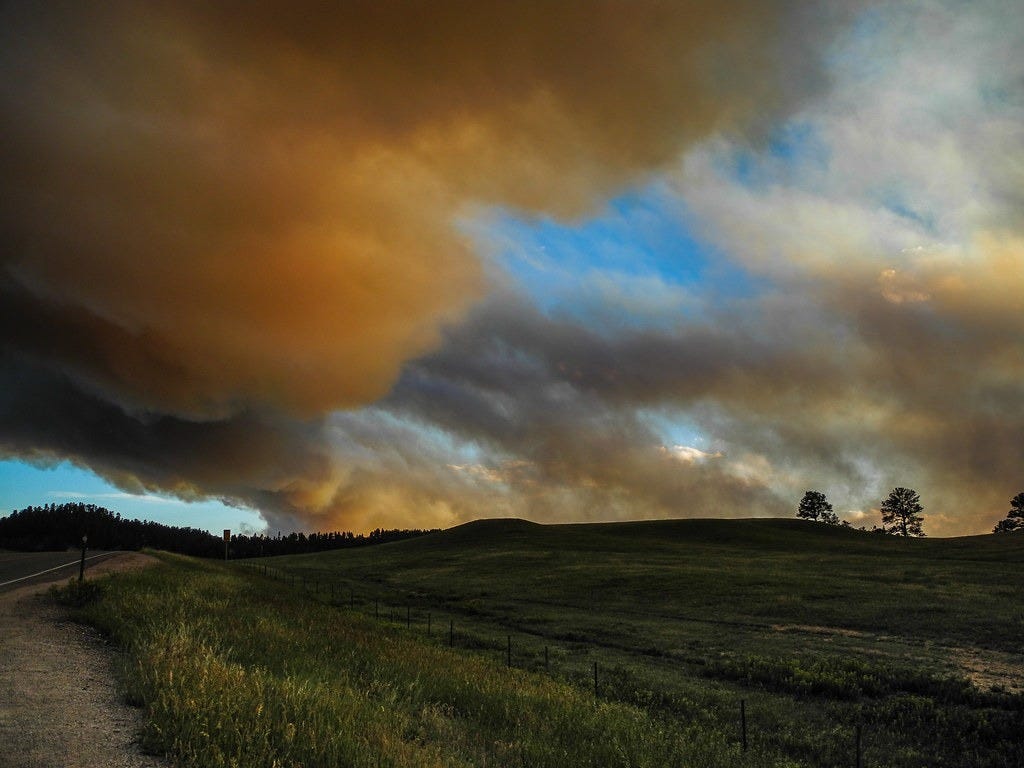

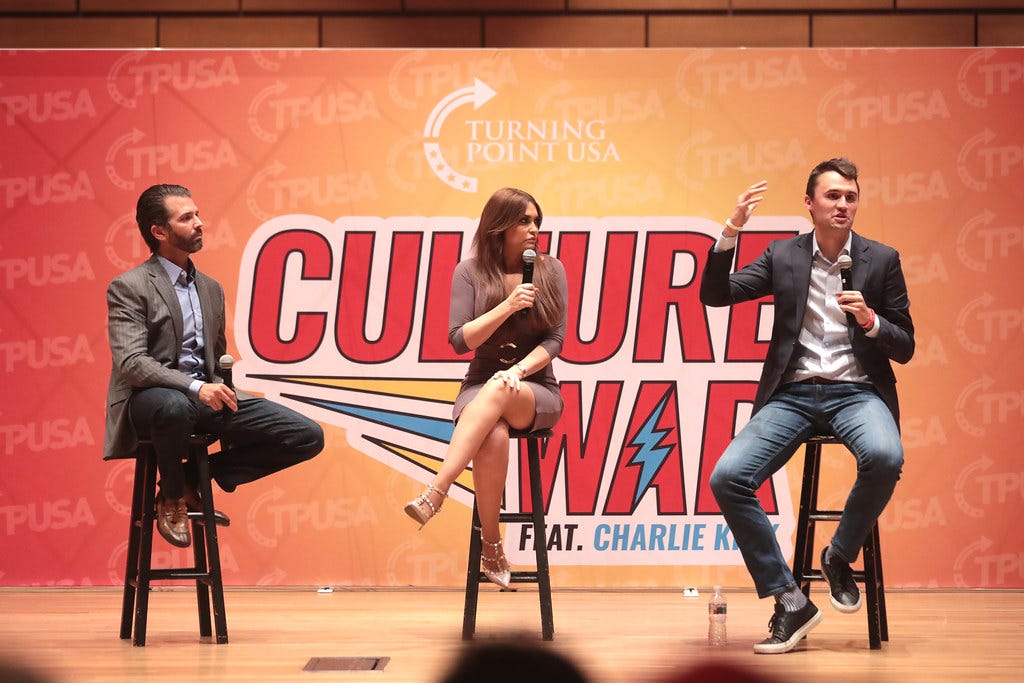
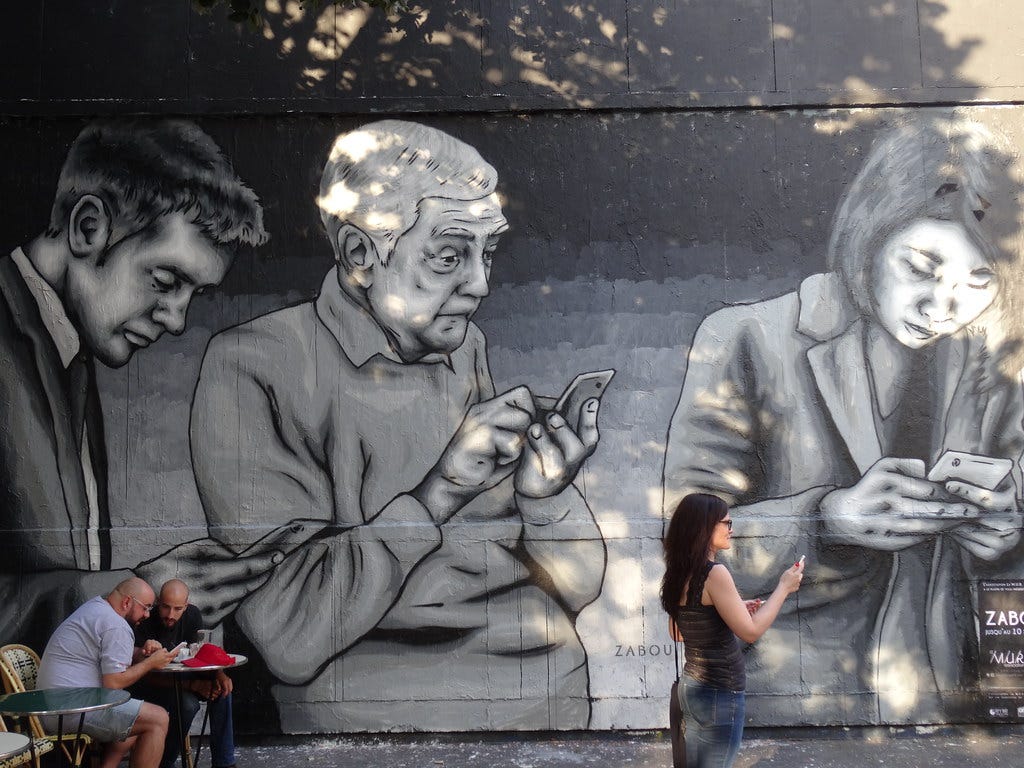

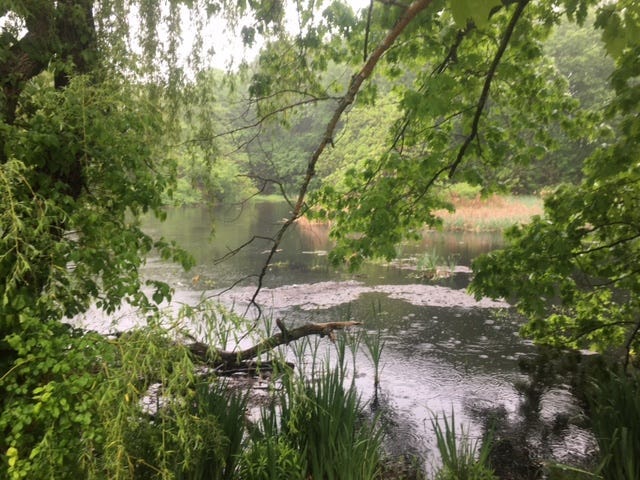

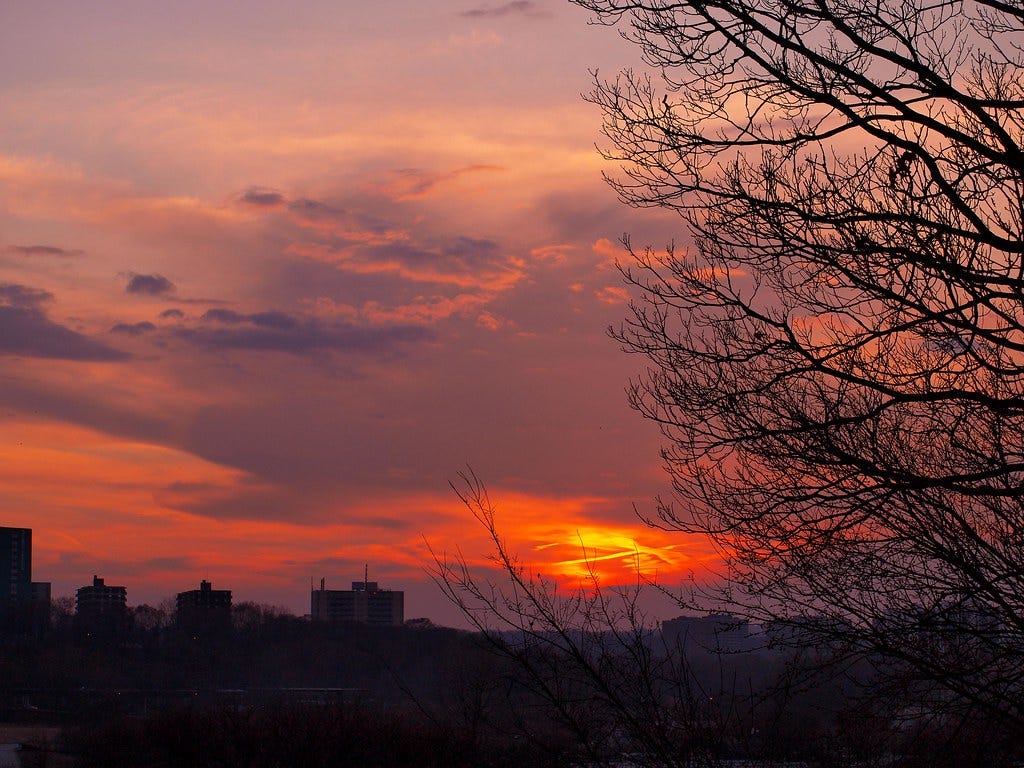
Hi Miles,
I am just writing as a fan of your posts. I was inspired by your Looming in your Dreams post from the spring to create a bucket list of scary hikes to be completed this summer (I'm a teacher). Because it was the shortest hike, the first trip was to Mt. Algo and the Grand Staircase. We had a great day, a good hike, and enjoyed discovering South Kent, CT. Then I was assigned jury duty, and things kind of . . . dwindled.
We did get to Long Pond Woods in RI and really enjoyed that one, especially the little gorge. Hope to make another trip there and explore some of those adjacent trails.
Also enjoyed the post about Dallas/heat. I am passing on this week's post to my sons, 21 and 24, as reminders. Thank you, and Keep doing what you're doing.